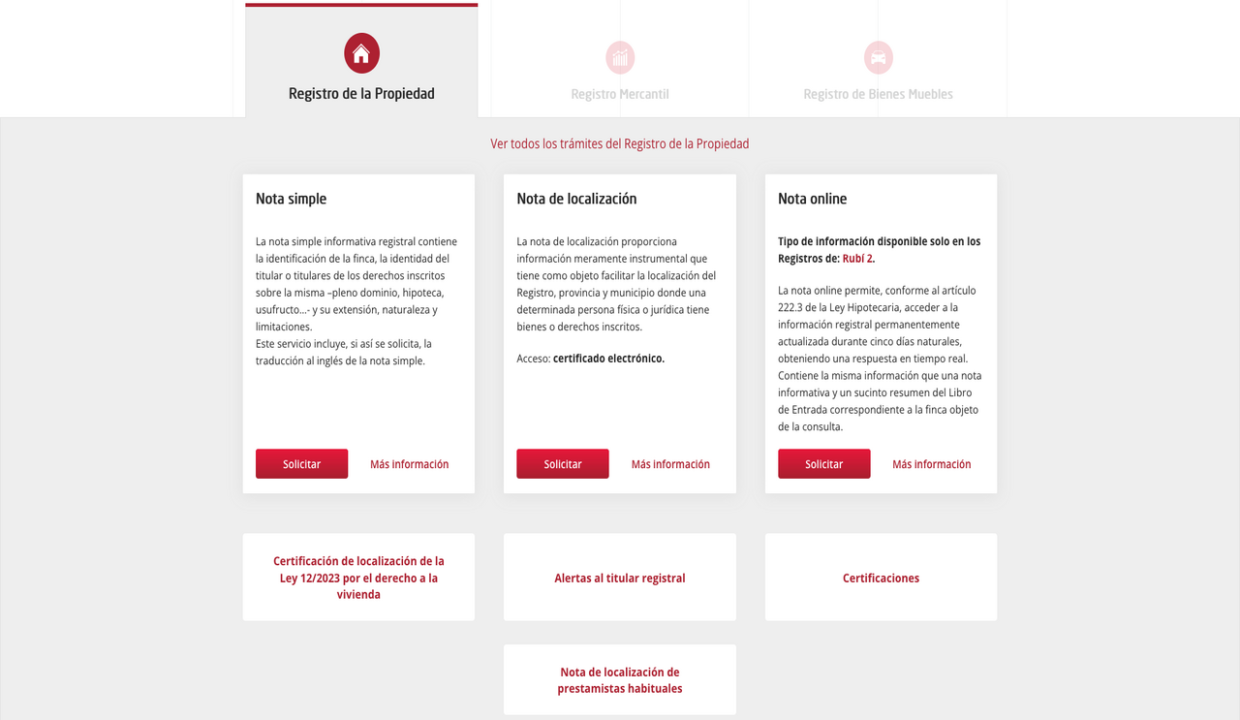"Nota simple" dotycząca zakupu nieruchomości w Hiszpanii
Wprowadzenie
Dla zagranicznych inwestorów poszukujących domów wakacyjnych w malowniczych krajobrazach Hiszpanii, zrozumienie "Nota Simple" jest jak rozszyfrowanie mapy skarbów. Dokument ten, wydawany przez Rejestr Nieruchomości, zawiera istotne szczegóły dotyczące nieruchomości, jej statusu prawnego i wszelkich obciążeń, jakie może ona posiadać. Wyruszmy w podróż, aby zdemistyfikować "Nota Simple", zapewniając, że Twoje przedsięwzięcie inwestycyjne jest zbudowane na solidnym gruncie.

Źródło z nota-simple.es
Rozwikłanie "Nota Simple"
1. Szczegóły rejestru nieruchomości
- Dane identyfikacyjne rejestru nieruchomości wydającego dokument, kluczowe dla weryfikacji autentyczności i źródła dokumentu.
2. Numer nieruchomości
- Unikalny identyfikator nieruchomości w określonym rejestrze nieruchomości. Różni się on od odniesienia katastralnego, które jest związane z celami podatkowymi.
3. IDUFIR (unikalny identyfikator właściwości rejestru)
- Ogólnokrajowy unikalny identyfikator, zapewniający jednoznaczną identyfikację nieruchomości we wszystkich hiszpańskich rejestrach nieruchomości.
4. Opis nieruchomości
- Przegląd nieruchomości, w tym lokalizacja, granice, wielkość i udział we własności. Rozbieżności z obecnym stanem mogą wynikać z niezarejestrowanych zmian.
5. Własność
- Szczegółowe informacje o właścicielach nieruchomości, ich udziale we własności i podstawie tytułu prawnego. Starsze wpisy mogą nie zawierać szczegółowych danych identyfikacyjnych.
6. Upoważnienie notariusza
- Informacje o notariuszu, który poświadczył dokument stwierdzający własność, w tym data i wpis w rejestrze.
7. Obciążenia
- Lista wszelkich obciążeń nieruchomości, w szczególności hipotek, w tym kwota, data utworzenia, notariusz autoryzujący i wpis do rejestru.
8. Data wydania i dokumenty oczekujące
- Data wydania "Nota Simple" oraz informacja, czy istnieją dokumenty oczekujące na rozpatrzenie, które mogą mieć wpływ na status prawny nieruchomości.
Zalecenia dotyczące należytej staranności
- Weryfikacja autentyczności: Potwierdzenie wydania dokumentu przez odpowiedni rejestr nieruchomości.
- Zrozumienie struktury własności: Dokonanie przeglądu wymienionych właścicieli i ich udziałów, zapewniając jasność co do tego, kto posiada prawa do nieruchomości.
- Sprawdzenie obciążeń: Zwróć szczególną uwagę na wszelkie wymienione opłaty lub zastawy, ponieważ mogą one mieć wpływ na Twoje prawa i zobowiązania finansowe.
- Potwierdź szczegóły nieruchomości: Porównanie opisanych cech nieruchomości z obecnymi warunkami, odnotowanie wszelkich rozbieżności, które mogą wymagać uwagi prawnej.
- Reprezentacja prawna: Rozważ zatrudnienie lokalnego prawnika zajmującego się nieruchomościami, aby poruszać się w zawiłościach hiszpańskiego prawa nieruchomości i zapewnić dokładne przeprowadzenie wszystkich badań due diligence.
Wnioski
"Nota Simple" jest kluczowym kompasem prowadzącym przez proces zakupu domu wakacyjnego w Hiszpanii. Podobnie jak astronauci skrupulatnie planujący swoją podróż przez kosmos, zagraniczni nabywcy muszą poruszać się po krajobrazie prawnym hiszpańskich nieruchomości z ostrożnością i precyzją. Zrozumienie "Nota Simple" oświetla drogę, chroniąc inwestycję przed nieprzewidzianymi przeszkodami.
"Odkrywanie królestwa hiszpańskich nieruchomości przypomina podróż w kosmos: uzbrojony w odpowiednią wiedzę i narzędzia, każdy krok przybliża Cię do odkrycia własnego kawałka raju wśród gwiazd".
Proces należytej staranności przy zakupie hiszpańskiej nieruchomości to nie tylko sprawdzanie pól wyboru; chodzi o zapewnienie, że każdy szczegół jest zgodny z Twoją wizją domu wakacyjnego, dzięki czemu Twoja podróż inwestycyjna jest nie tylko bezpieczna, ale także satysfakcjonująca.
Proces należytej staranności przy zakupie hiszpańskiej nieruchomości to nie tylko sprawdzanie pól wyboru; chodzi o zapewnienie, że każdy szczegół jest zgodny z Twoją wizją domu wakacyjnego, dzięki czemu Twoja podróż inwestycyjna jest nie tylko bezpieczna, ale także satysfakcjonująca.

